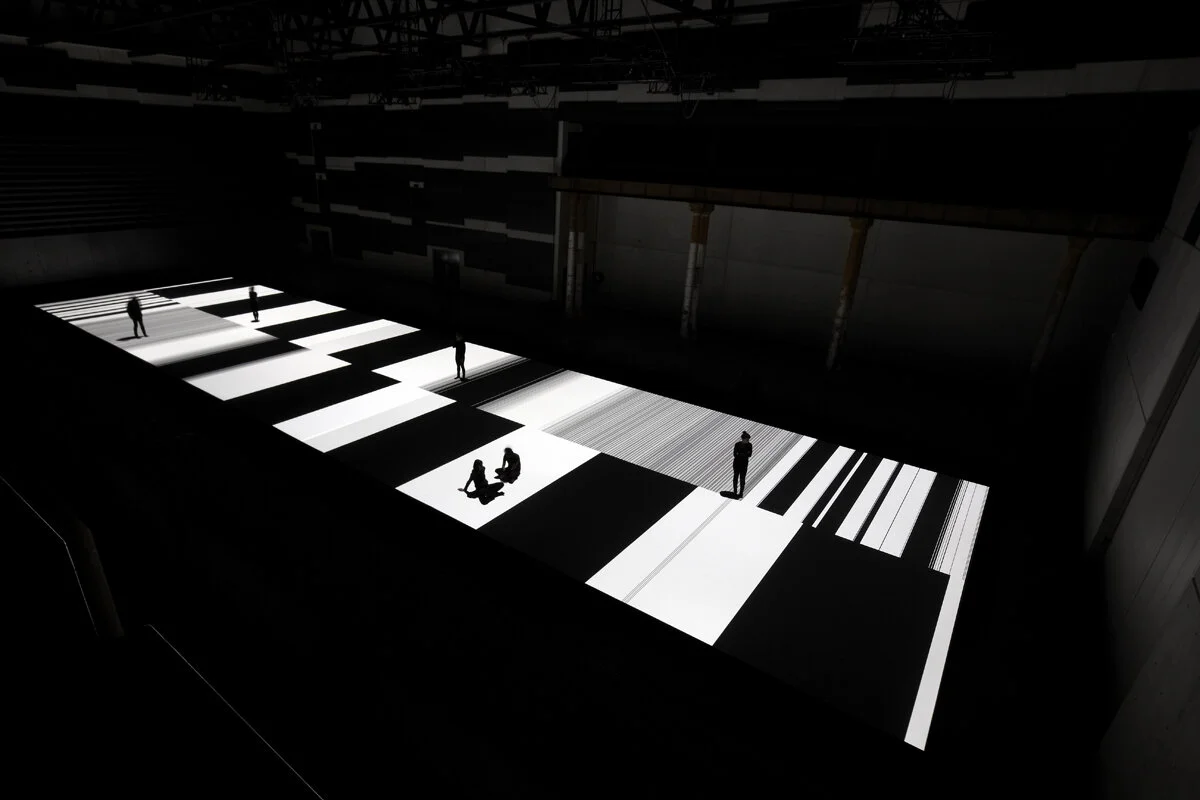Field notes: 26 November 2015
Professionalisation of the media arts in 2015
Ryoji Ikeda presented the installation "Test Pattern [n.8]" (2015) at the ACT Festival from November 25th to November 28th 2015, in Gwangju, South Korea. This leitmotif led me to Korea to research not only the new works presented but also to discuss with artists and producers from all over the world about the subject of professionalisation of the media arts sector across the globe. What are the best practices? What can Dutch policy learn from foreign?
What’s going on.
Visionary projects and collaborations can happen in isolation. However, they are more likely to flourish when bolstered by supporting and infrastructure. From festivals commissioning and funders to the experts that help projects be delivered in time and on a budget, the professionalisation of the work produced for the festival and gallery circuit has dozens of stakeholders.
The professionalisation of the field of the media arts was a hot topic during the 2015 edition of the ACT Festival, in Gwangju, South Korea. Given these complex realities, how can artists, curators, and cultural programmers collaborate most effectively – what works best, what are the problems, and what are the opportunities? Furthermore, what potential is there in South Korea (and throughout Asia) to cultivate relationships with international organisations, promote regional artists abroad, and lead in innovation where art, design, and technology intersect.
Commissions as location-based assignments.
Juliette Bibasse (producer Joanie Lemercier) presented “Blueprint” and its variations at the STRP Biennial (Eindhoven), Sonar (Barcelona) and Nemo Biennial (Paris). These festivals provided different contexts (and assignments), which made the piece acquire various kinds of presentation formats. Blueprint is an example of an artwork whose evolution relies on commissioning opportunities in terms of setting and dedicated budgets. Because of decreased budgets, Juliette observed that artists struggle between maintaining artistic integrity and compromising with a more commercial and business-minded approach. Practice indicates the field needs professionalisation.
A world of decreased budgets.
There is a global tendency of decreasing cultural budgets. Traditional artistic practice depends on public funding mostly, sometimes co-financed by self-generated revenue. Ana Ascencio (Mapping Festival, Geneva) shares that her festival’s financial structure is divided between 50% public funding and 50% self generate revenue (tickets, workshops, bar, etc.). Ellen Pau (Microwave Festival, Hong Kong) explains that the entire funding structure of her festival is based on public funding. This practice has various risks. First of all, the risk of sustainability. Secondly, this has repercussions in the way that, operationally, the artistic practice is (still) handled, e.g. the lack of professional frameworks and stability within this artistic practice.
Cooperation networks.
New ways of funding and generating content needs to be found. Cedric Huchet (Stereolux, Nantes) points out the importance of networks of organisations and artists to balance this decrease in financial means. An indicator of possible future ways of working is to develop better frameworks for co-productions, sharing resources and finances with partner organisations. Ellen Pau gives the example of her strategy to create new content in constant cooperation between the local media and new media schools. If curation detects prospect talents in an early stage, in the context of media education, this means that content generation could be co-financed by Education. Being part of such content-generation networks (with partner organisations and/or education and research institutes) is an opportunity that the field starts now to explore. All panellists refer examples of cooperation and note that there is another side of the coin: being in networks needs to be more than putting logos together, under risk of building ghost collaborations that deliver nothing. There needs to be a synergy to share resources, results and create truly relevant cooperation.
The need for professionalisation of the artistic practice.
The practice in the field seems to be based on a traditional way of approaching artistic activity and profession. They refer to a world where creative work benefits from a special status that requires protection from integrity violation. In fact, it may be the traditional approach to artistic production as a profession that is leading to the field to have decreased resources. Both from an organisational and an artist perspective, the creative activity needs to be professionalised: working frameworks, the delivering to assignments, a payment structure, and a fairer practice.

